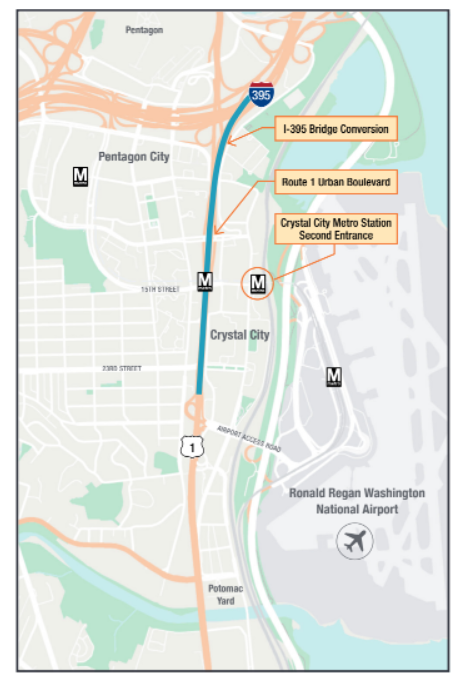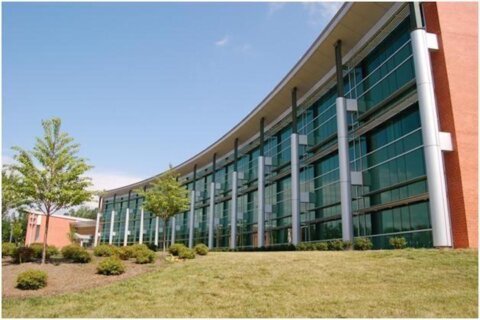With the just-opened Potomac Yard Metro Station and the planned pedestrian bridge to Ronald Reagan National Airport, there’s a lot of work and planning to make the Route 1 corridor in Alexandria and Arlington, Virginia, easier to navigate in the future — but that involves improving what’s there today.

The “Connecting National Landing” project would turn a half-mile of Route 1 from what’s currently an elevated highway into a ground-level walkable, bike-able urban boulevard.
Last year, Virginia leaders sent letters to U.S. Department of Transportation Secretary Pete Buttigieg, seeking $97 million in federal funding to move the multi-modal transportation project forward. A spokesperson for the Department of Transportation tells WTOP that grant recipients will be announced at some point later this year.
“Investment in National Landing will produce significant, measurable benefits to the economy, health, and safety of local citizens,” according to the letter to Buttigieg, signed by Virginia lawmakers in the Senate and House.
The Virginia Department of Transportation said the current elevated freeway forms a barrier between destinations to the east and west of the highway.
“While Crystal City and Pentagon City are evolving from auto-centric places to higher-density, urban places that people can access by a variety of modes—walking, biking, transit, or driving—many stakeholders now desire to convert this half-mile long segment of urban freeway to embrace Route 1 as a city street with storefronts and building entrances,” according to the VDOT project overview.
“This urban boulevard will knit the urban fabric of Crystal City as part of the larger National Landing area,” the overview stated.
VDOT said the project would remove two bridges from its inventory, reducing long-term maintenance costs.
“Modifications to the I-395 interchange will remove a bridge that is both structurally deficient and fracture critical while avoiding future replacement or rehabilitation costs, with the added benefit of extending the urban boulevard to the north that will contribute to lower speeds,” VDOT said.








